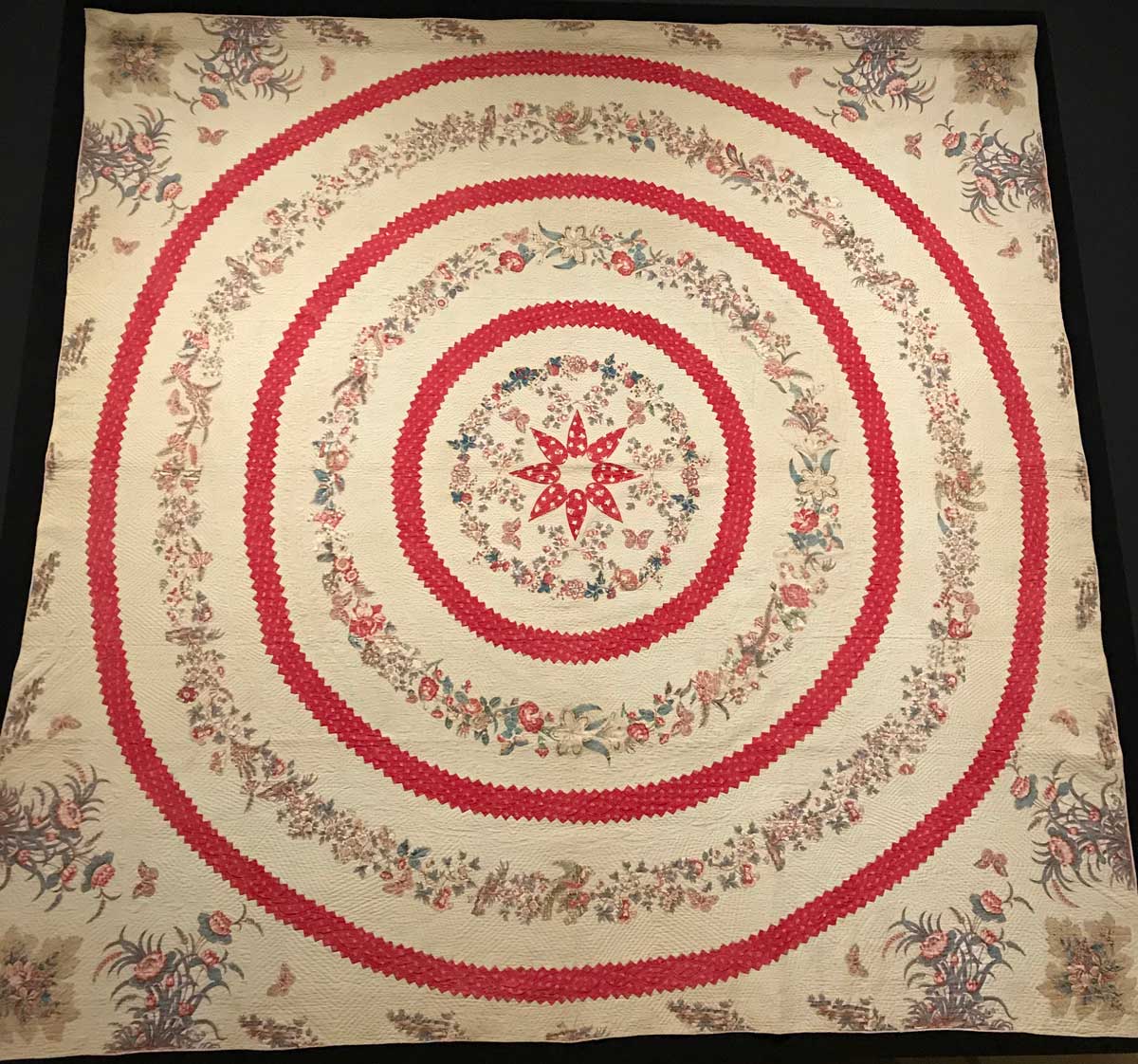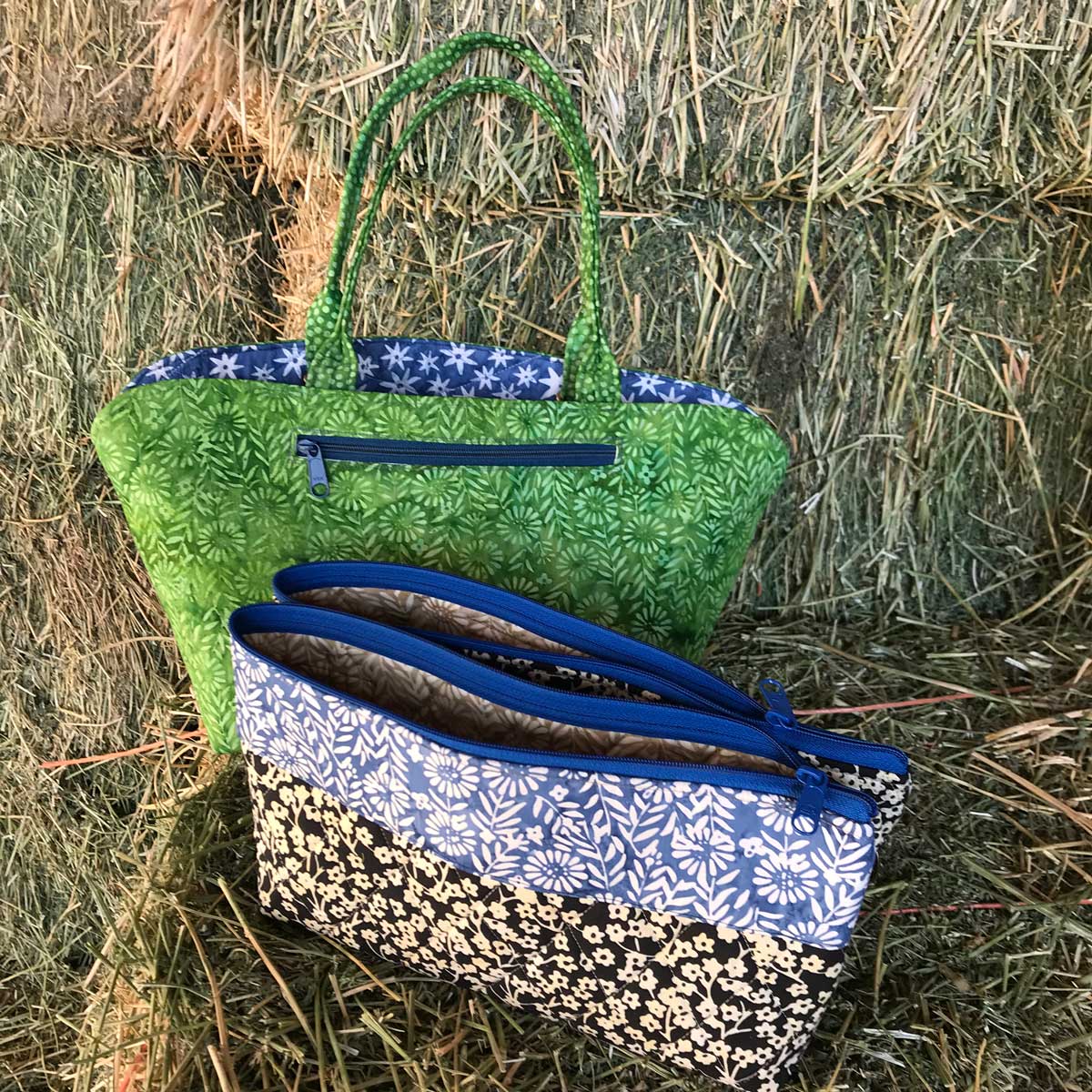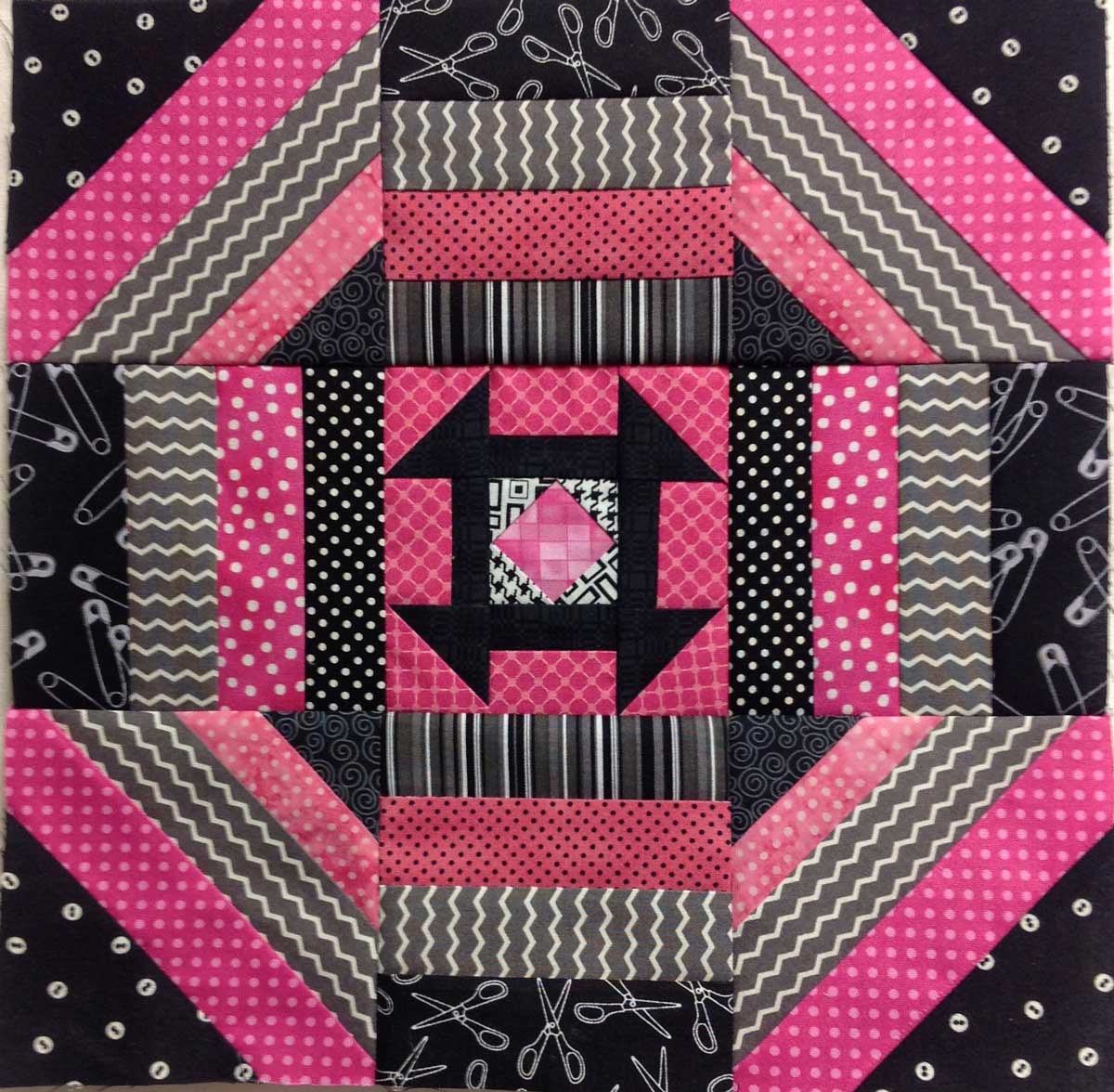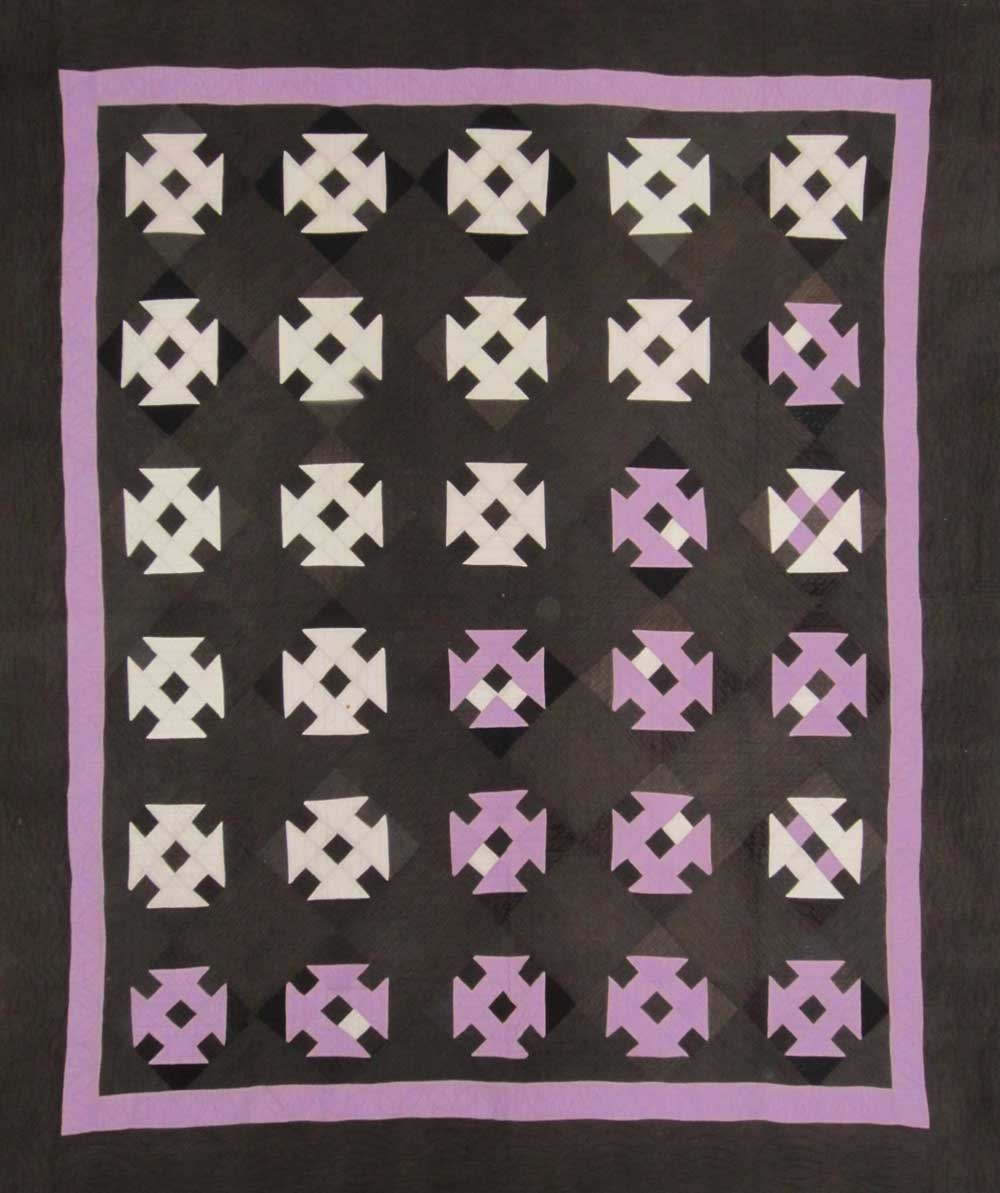Journeys in quilt history – political patchwork quilts
September 2024
Covering Quilts
Journeys in quilt history – Political Patchwork Quilts
by Sandra Starley
There is no better way to learn history and have fun than through examining, studying, and researching antique quilts. In preparation for my American Quilt Study Group Quiltside Chat with Carolyn Ducey, curator of the International Quilt Museum, in June, I was researching several 1840s signature album quilts from the Philadelphia, Pennsylvania/Trenton, New Jersey, region. I focused on several quilts that are quilted genealogical records and textile documents. These quiltmakers paired the formula of the recording family history in the front of the family Bible and documenting the sentiments of friends in autograph albums to create the phenomenon of signature album quilts. They also provided more signs to their lives that you will find if you look more closely. There are indicators of occupations, favorite flowers, birds, books, and Bible verses. There are also political preferences or examples of quilters voting with their needles if you understand the clues and the signs of the time in which the quilts were made.
One of the museum quilts I researched, while made a bit later and farther west of the main selections, the Hepzibah Shinn Cox quilt (IQM 2012.028.0001, Ohio, 1857, Quaker), features an interesting political message. A furry ram applique nestled among floral appliques in the center of the quilt could be viewed as just a cute sheep block. But luckily for us, the block maker added “Hurrah for Old Buck,” the nickname for President James Buchanan, who was in office when the quilt was made. The block is a subtle but strong indicator of the political commitment of the quiltmaker. Similarly, the Sarah Wistar Album Quilt (IQM #2005.059.0001, Pennsylvania, 1842, Quaker) is not only an amazing genealogical record with a literal family tree drawn in the center but shares the maker’s political allegiance. The center section also displays a tribute to Whig Party President William Henry Harrison. It includes all the states in the Union during his brief 1841 presidency along with a log cabin. Sadly, Harrison was only in office for 30 days as he died after giving a very long inaugural speech in bad weather. The Whig Party adopted the symbols of the folksy log cabin and hard cider to appeal to the common man.
The log cabin seemed familiar, and in reviewing photos I found the same inked log cabins on a couple of other early signature quilts made by Quaker families in the Philadelphia area. A cousin quilt to the Wistar Album — the Pennock Album quilt (1842, Chester County Pennsylvania Historical Society Collection) not only has a similar genealogical record as the Wistar Album but also the same symbol of political preference – a log cabin. Specifically, the block for “S. Pennock aged 72” displays a cabin with a barrel labeled “hard cider,” a clear indication of the Whig Party. Additionally, the Mary Worrall Parry quilt (Quaker, Delaware County, Pennsylvania 1844, private collection), also features a log cabin. That cabin features a flag supporting Henry Clay, the 1844 Whig presidential candidate. Without the name on the flag or the hard cider label, it would be easy to miss the party preference and view the cabin as just a little house. It is fascinating to see these Quaker quilters were voting with their needles and recording political affiliations along with family genealogy. It makes me want to continue to explore and discover messages hidden in the cloth. Keep your eyes open and you may learn about history the fun way – through antique quilts!
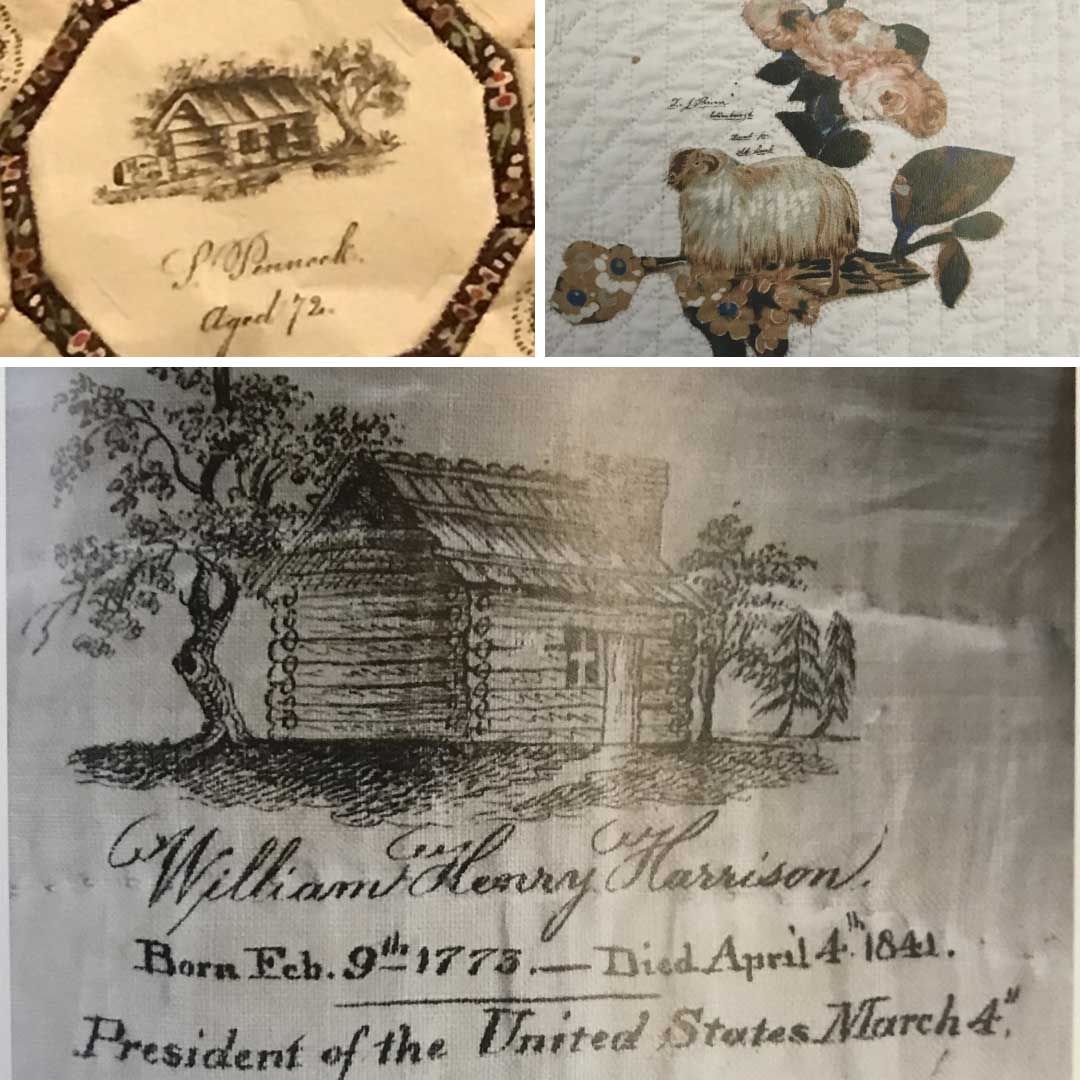
Details from the Pennock Album, Shinn Cox, and Wistar Album. (Image courtesy of the author)
Sandra Starley is nationally certified quilt appraiser, quilt historian, and avid antique quilt collector. She travels throughout the U.S. presenting talks on antique quilt history, fabric dating classes and trunk shows as well as quilting classes. Learn more at utahquiltappraiser.blogspot.com. Send your comments and quilt questions to SandraStarley@outlook.com


